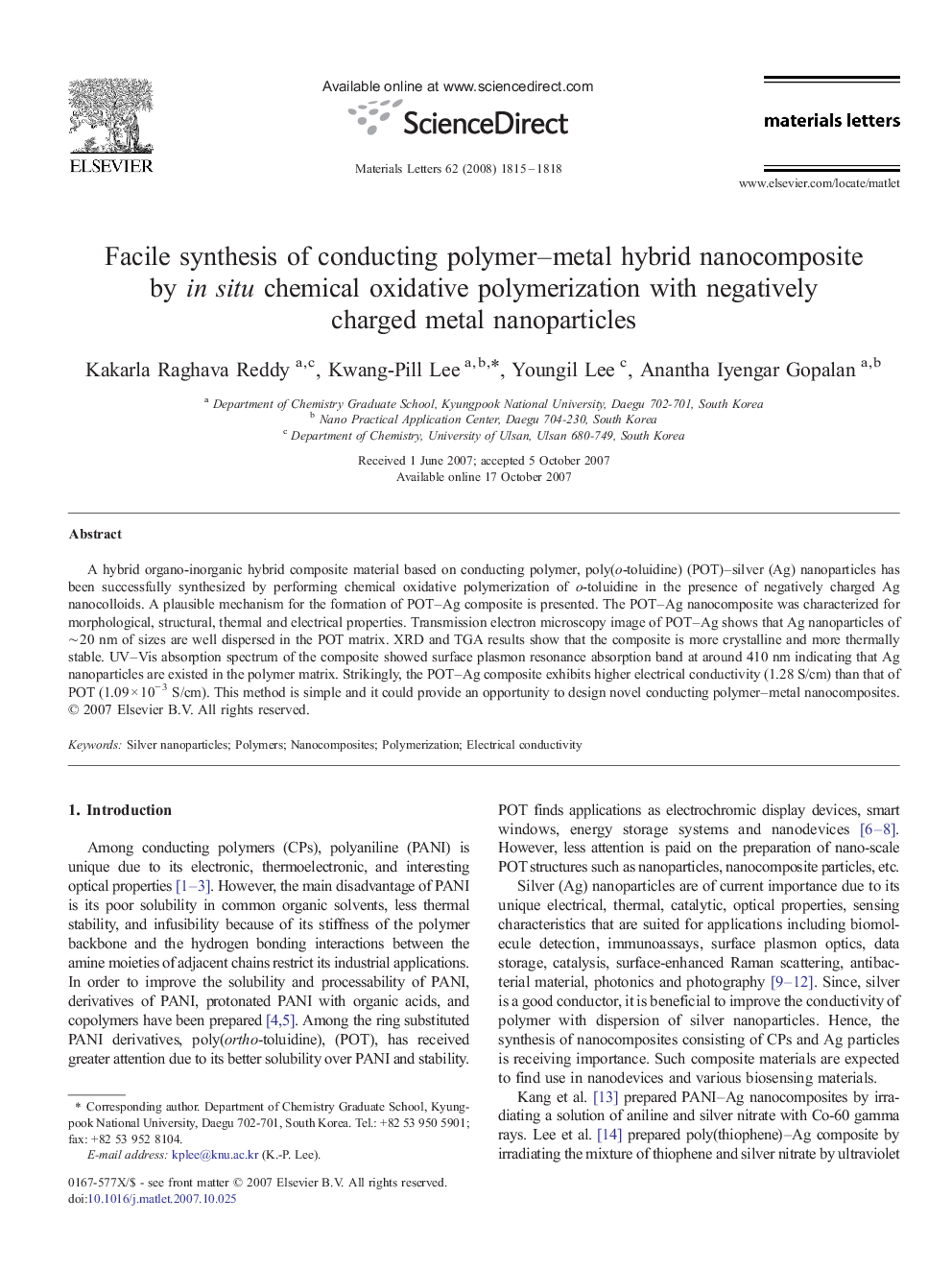| Article ID | Journal | Published Year | Pages | File Type |
|---|---|---|---|---|
| 1651695 | Materials Letters | 2008 | 4 Pages |
A hybrid organo-inorganic hybrid composite material based on conducting polymer, poly(o-toluidine) (POT)–silver (Ag) nanoparticles has been successfully synthesized by performing chemical oxidative polymerization of o-toluidine in the presence of negatively charged Ag nanocolloids. A plausible mechanism for the formation of POT–Ag composite is presented. The POT–Ag nanocomposite was characterized for morphological, structural, thermal and electrical properties. Transmission electron microscopy image of POT–Ag shows that Ag nanoparticles of ∼ 20 nm of sizes are well dispersed in the POT matrix. XRD and TGA results show that the composite is more crystalline and more thermally stable. UV–Vis absorption spectrum of the composite showed surface plasmon resonance absorption band at around 410 nm indicating that Ag nanoparticles are existed in the polymer matrix. Strikingly, the POT–Ag composite exhibits higher electrical conductivity (1.28 S/cm) than that of POT (1.09 × 10− 3 S/cm). This method is simple and it could provide an opportunity to design novel conducting polymer–metal nanocomposites.
